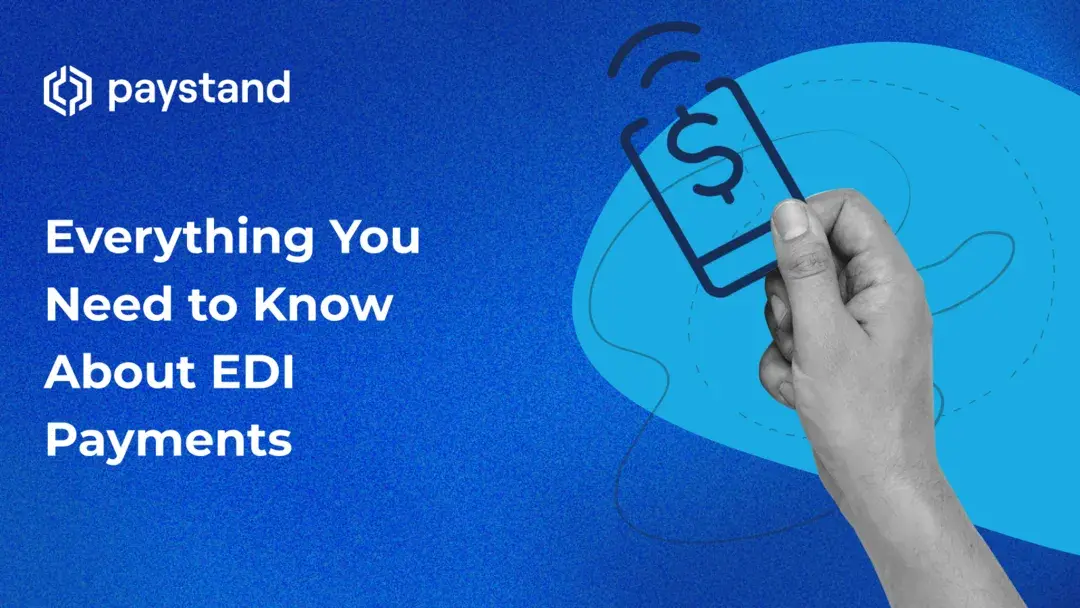EDI Payments Made Simple: A Guide for Business Owners

Table of Contents
- What Are EDI Payments?
- How Do EDI Payments Work?
- Who Uses EDI Payments?
- EDI Payments vs. ACH Payments
- Is EDI the Same as EFT?
- What Are the Benefits of EDI Payments?
- What Are the Disadvantages of EDI?
- Types of EDI Payments
Key Takeaways
- Definition: EDI payments involve the electronic exchange of payment-related data between businesses in a standardized format.
- Benefits: They save time, reduce costs, improve accuracy, and enhance security.
- Comparison: EDI focuses on structured data exchange, while ACH and EFT handle fund transfers.
- Applications: EDI is widely used across industries like retail, healthcare, and supply chain management.
Electronic Data Interchange (EDI) payments offer a way for organizations to transform how they handle transactions, moving beyond outdated paper processes to automated, digital payments. By adopting EDI payments, businesses can save time, reduce costs, and ensure smoother operations in a rapidly evolving digital economy.
Whether you’re new to EDI or exploring ways to improve your payment processes, this guide will walk you through everything you need to know about EDI payments, from how they work to the benefits they offer.
What is an EDI Payment?
EDI (Electronic Data Interchange) payments enable businesses to exchange payment-related information in a standardized format electronically. Unlike traditional methods involving paper-based processes, EDI payments streamline operations by automating data exchanges between systems.
This technology helps organizations achieve greater efficiency and accuracy while reducing costs and minimizing errors.
How Do EDI Payments Work?
The EDI payment process follows these steps:
- A payment document is created in the buyer's system.
- The document is formatted into an EDI standard like ANSI X12 or UN/EDIFACT.
- It’s transmitted to the seller’s system via secure communication protocols like AS2.
- The seller processes the payment document and updates their records.
- An electronic remittance advice is sent back to the buyer, confirming the transaction.
This automated process ensures a seamless exchange of payment information, improving operational efficiency.
Who Uses EDI Payments?
EDI payments are widely adopted across industries where efficiency, accuracy, and automation are critical. In retail, companies like Walmart use EDI to manage complex supply chains, automating purchase orders, invoices, and shipping notices to reduce errors and ensure timely deliveries.
Manufacturers benefit from EDI by streamlining supplier coordination and inventory management. For example, automotive manufacturers can use it to automate parts ordering and payments, keeping production schedules on track. Similarly, in the food and beverage industry, EDI supports faster procurement and inventory replenishment, reducing waste and improving efficiency.
In healthcare, EDI is essential for processing insurance claims and payment remittances, enabling faster reimbursements and reducing administrative overhead. Financial institutions also rely on EDI to automate vendor payments and payroll, offering businesses secure and efficient transaction processes.
The logistics and transportation industry uses EDI to improve freight booking, shipment tracking, and payment reconciliation, while government agencies adopt EDI for vendor payments and procurement to enhance transparency and reduce paperwork.
From retail and manufacturing to healthcare and logistics, EDI payments empower businesses to cut costs, save time, and strengthen partnerships, showcasing its value in today’s digital-first economy.
EDI Payments vs. ACH Payments
While both EDI and ACH support electronic transactions, they differ in purpose and functionality:
| Feature | EDI Payments | ACH Payments |
|---|---|---|
| Primary Function | Structured data exchange | Fund transfers |
| Use Case | Supply chain management | Payroll, bill payments, direct deposits |
| Scope | Payment-related documents | Various fund transfer methods |
For example, a company may use EDI to send invoice details and ACH to transfer the payment itself.
Is EDI the Same as EFT?
EDI and EFT (Electronic Funds Transfer) overlap but are not the same.
- EDI Payments: Focus on exchanging payment-related information between businesses in a structured format.
- EFT: Encompasses all forms of electronic fund transfers, including ACH, wire transfers, and card payments.
Think of EDI as the communication method and EFT as the broader financial movement mechanism.
What Are the Benefits of EDI Payments?
EDI payments offer numerous advantages for businesses:
- Efficiency and Cost Savings: Automating payment processes reduces manual labor and errors, cutting operational costs.
- Streamlined Workflow: Integration with financial systems eliminates manual reconciliation and speeds up cash flow management.
- Enhanced Accuracy: Standardized data formats reduce errors and improve payment reliability.
- Improved Security: Secure protocols like AS2 and encryption protect sensitive payment data.
- Faster Transactions: Automated processes expedite the payment cycle, optimizing working capital.
What Are the Disadvantages of EDI?
While EDI offers many advantages, it does come with challenges:
- High Initial Costs: Setting up EDI systems can require significant hardware, software, and training investment.
- Implementation Complexity: Ensuring compatibility with trading partners and adhering to standards can be technically demanding.
- Ongoing Maintenance: EDI systems require regular updates and monitoring, which may strain IT resources.
- Partner Dependency: EDI relies on all trading partners using compatible systems, and delays can occur if standards aren’t met.
- Limited Flexibility: EDI may not easily accommodate unique business needs or non-standard processes.
- Risk of Downtime: System failures can disrupt operations and delay critical transactions.
- Challenges for Small Businesses: Despite cloud-based options, smaller organizations may still find EDI adoption cost-prohibitive.
While these drawbacks exist, modern cloud solutions and outsourcing can address many of these issues, making EDI more accessible and manageable.
Types of EDI Payments
Different types of EDI payment methods cater to specific business needs:
- Direct EDI: Establishes a one-to-one connection between business partners.
- EDI Network Service Providers: Facilitate data exchanges using multiple communication protocols.
- Web EDI: Accessible through standard browsers, ideal for smaller businesses.
- EDI Outsourcing: Delegates EDI management to third-party experts.
These options ensure flexibility and scalability for businesses of all sizes.
By embracing EDI payments, businesses can reduce costs, improve operational efficiency, and foster stronger relationships with trading partners. Whether you're new to EDI or looking to optimize your current processes, this guide provides the foundation for success.
Learn more about optimizing your payments in 2025.







%20(1)%20(1).jpg?width=100&height=100&name=IMG_3752%20(1)%20(1)%20(1).jpg)